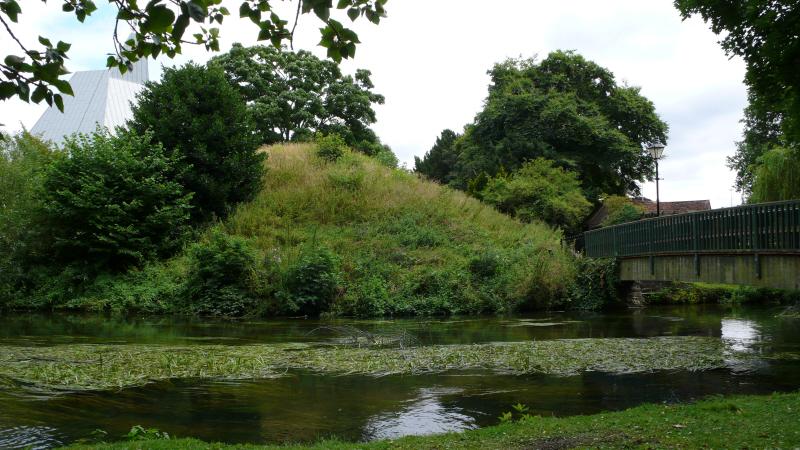. > ...
the history of Leyton and Leytonstone
from . dot to … dots – with plenty of spaces


1066 - 1154, The Norman Conquest to
the death of King Stephen
The Powerful
The Norman followers of William the Conqueror were small in number but built a network of castles, cathedrals, abbeys and parish churches which in its domination of the landscape was only rivalled before the 17th century by prehistoric earthworks, graves and standing stones, and by the Roman network of villas and military roads. But the Normans did not build in Leyton. Almost all Anglo-Saxon local landholders were replaced by immigrants from the continent, not just Normandy but Flanders and elsewhere. The pattern of landholdings was fragmented even more, so that a man would be lord of a number of manors some way apart. The king did not want potential rivals to have a powerbase, but he did want his fellow Normans to extend the influence of the new aristocracy to every part of the kingdom. England was more strongly unified and strategic places fortified. Religious institutions were given new non-English leadership and, over time, an imposing new architecture.
The Domesday Book is the record made of the new system and the wealth it controlled. It shows Leyton divided into 6 holdings, generally much reduced in value since 1066. Perhaps a Saxon lord or lords at Leyton opposed William the Conqueror, in punishment for which its mills and its ditches for field drainage and irrigation were damaged, but that is speculation. Peter de Valognes (Valoignes) owned the manor of Ruckholt when the Domesday Book was prepared. Peter’s main residence was at Benington, Hertfordshire 1. In 1086 he was appointed Sheriff of Essex and Hertfordshire and Governor of Hertford Castle (photo to right).
1 He also owned 11 other manors in Essex including Walthamstow Higham Benstede as it became known, Loughton, Theydon Bois and North Weald Basset, 17 in Hertfordshire, 6 in Suffolk, 20 in Norfolk, 1 in Cambridgeshire and 1 in Lincolnshire.
